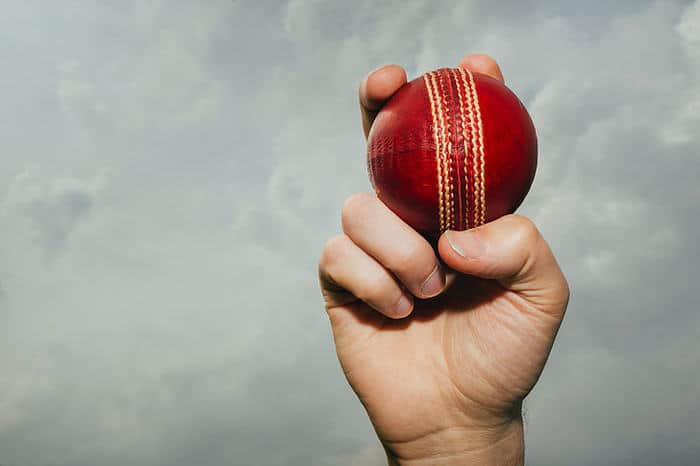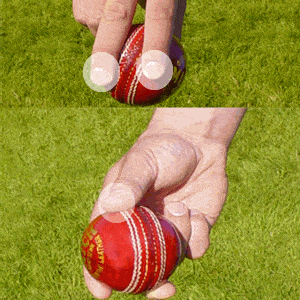
Seam movement is an event that occasionally occurs when a cricket ball makes contact with the pitch. It causes the cricket ball to deviate from its intended path, and as a result, the ball usually sinks towards the batsman or stays away from them. The seam movement occurs when the upper part of the cricket ball is slightly raised. This means it is a bit thicker than the rest of the ball.
You can see the grown beans in my picture above! Because of this design, if the pitch is slightly tilted, the pitch can move the ball in the other direction if it makes contact with the pitch. Fast bowlers should target to move the ball slightly because it travels through the air so that there is more possibility of seam contact with the pitch in this way.
Top 9 Tips to Improve Seam Position in Cricket
1. Practice your Seam Position –
Take your cricket ball in hand. Make sure you have an excellent position to control your cricket ball for practice. It would be a shame if your hard work were wasted practicing with unregulated force.
2. Place your Fingers Respectfully Along the Seam –
Your fingers should form a narrow V, your index finger slightly to the left from the top left of the front and your middle finger to the other side of the seam. You need to complete your grip by aligning your thumb directly with the seam path. Most of your pull on the ball should come from your thumb and sword. Your middle finger should be used to balance the ball.

3. Throw your Ball in the Air –
Just throw your ball in the air to practice regularly. Using only your wrist, toss your ball to keep the seam as stable as possible. Repeat this practice until your seams are consistently straight, and the motion is natural. Hold your ball according to your swing.
You will want a more narrow grip between your fingers and middle finger for quick swing, with little space between these fingers and the seam of the ball. More space between your front and middle fingers will translate into a slower ball.
4. Try Bowling in the Air –
Lie on the ground and keep your ball in a V-grip position. In a controlled fashion, mimicking how you bowl on the pitch, toss your ball into the Air. Practice repeatedly to keep the seam of the ball straight. Try to control your wrist’s position; A Sample wrist placed behind the ball will help you maintain the form you need for consistent seam bowling.
5. Try the Side on Position with your Seam Ball –
Many coaches encourage bowling, as it helps in many bowling actions. A pacer is thought to be lined up towards the batsman with his back legs, chest, and in contact with the legs. When practicing in this position, your main goal is to start bowling at a slow to medium speed while keeping your ball movement as straight as possible.
6. Bowl in Front of the Position –
The bowler has to align his hips and chest towards the batsman after making contact with the back of the bowler’s chest. Even if it doesn’t make you like a swing, practicing your seam ball in different ways probably gives you a better understanding of the seam ball’s speed.
9. Bowl with New Balls –
There is a big difference between a new cricket ball that is not used sometimes and an old ball that is bowled somewhere over 20 overs. The old ball will take a lot of punishment for repeatedly hitting the pitch and hitting the bat. It can also absorb a lot of moisture when the outfield gets wet!
This damage will mean that the ball will soften and gradually become colored, and the seam will become much less pronounced. Due to the ball’s softness and the seam and the fact that this ball does not raise the seam than the rest of the ball, it isn’t easy to achieve seam movement.
Final Words for Seam in Cricket
Seam movement is incredibly tough to deal with batsmen because they have no idea when it will happen and don’t have enough time to react. If a fast bowler bowls at 60-65 mph and the ball lands 4-5 meters in front of the batsman, the batsman should have about two-tenths of a second if the ball moves towards or away from them. It is impossible to do it properly.
The new ball will be shiny, hard rock, and the seam will be much thicker and more pronounced. This means that when the ball makes contact with the pitch, the seam is more likely to affect the ball to bounce irregularly. Put, if you want a lot of seam movement, the best time to bowl is as an opening bowler. If you can persuade your captain to open the innings, it will give you a chance to make some movement from the pitch.
Leave a Reply